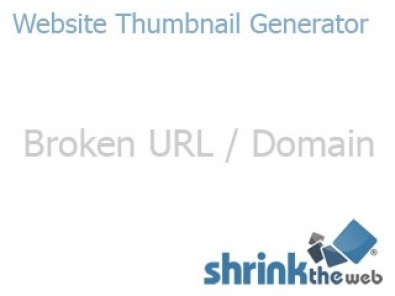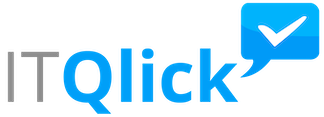Launchfire Pricing Plans & Cost Guide (May 2022)
Compare Pricing
| ITQlick Score: | 65/100 |
|---|---|
| ITQlick Rating: |
|
| Pricing: | 5.8/10 - average cost |
| Category: | LMS -> Launchfire review -> Launchfire pricing |
| Ranking: | Ranked 331 out of 618 LMS systems |
| Company: | Launchfire Interactive |
| Typical customers: | Medium and large size businesses |
| Platforms: | Desktop |
| Links: | Launchfire review, Launchfire alternatives |
 Shlomi Lavi / May 17, 2022
Shlomi Lavi / May 17, 2022We publish unbiased reviews. Our opinions are our own and are not influenced by payments from advertisers. This content is reader-supported, which means if you leave your details with us we may earn a commission. Learn why ITQlick is free .
Table of Contents
Launchfire pricing: How much does it cost in 2024?
Launchfire don't share their pricing info publicly, you can leave your details with us or contact them in order to get the pricing information.
Launchfire vs. competitors (pricing)
Launchfire is about the same cost as the industry average. When comparing to other top LMS vendors, on a scale between 1 to 10 (10 is the most expensive to implement), Launchfire is rated 5.8. Read the article below in order to calculate the total cost of ownership (TCO), which includes: customization, data migration, training, hardware, maintenance, upgrades, and more.
Cost of software customizations
Customizing the software to meet the specific needs of the organization can be a costly process, especially if the customization requires significant development or integration work. The average cost of customization can range from a few thousand dollars to several hundred thousand dollars, depending on the complexity of the customization work.
Data migration cost Relevant for Launchfire
Migrating data from old systems to the new software can be a time-consuming and costly process, especially if the data is large or complex. The average cost of data migration can range from a few thousand dollars to several hundred thousand dollars, depending on the size and complexity of the data.
Cost of training
How many groups (different departments, usages, type of users) are needed for Launchfire training? Training employees to use the new software can be a significant cost, especially if the software is complex or requires specialized knowledge. The average cost of training can range from a few hundred dollars to several thousand dollars per employee, depending on the complexity of the software and the duration of the training.
Cost of maintenance
Ongoing maintenance and support for the software can be a significant cost, especially if the software requires frequent updates or has a high rate of bugs or issues. The average cost of maintenance can range from a few hundred dollars to several thousand dollars per year, depending on the complexity of the software and the level of support required.
Frequently Asked Questions (FAQs)
Learning Management Systems Software Price Range
Companies in need of Learning Management Systems (LMS) software would typically have to pay between $10 to more than $1,000+. The price range reflects the different model vendors use; such as “Pay-per-Learner”, “Pay-per-use” and Licensing fee system. Software vendors would also charge for additional features such as certification and Gamification. Depending on the size of the organisation, LMS software price ranges are as follows:
- Small businesses will generally have to pay between $3 - $300 for LMS software. For example, iSpring Learn starts at $4 a month, Talent LMS pricing goes for $59 a month, and Easy LMS costs $50 monthly. Coassemble starts at $99 a month, with its standard plan at $299 per month.
- Medium-sized companies can expect to pay between $99 and $1200 for LMS software. Tovuti LMS, for instance, charges $450 a month, uQualio Professional pricing plan goes for $499 a month, and LearnWorlds costs $99 per month. Other vendors bill users per year; some examples of these vendors are GoSkills, which charges $199 a year, and SkillCast pricing goes for $1200 annually.
- Large organisations should typically expect a price range of $1000-$7000 for an LMS software setup. Vendors may also charge for implementation, which brings about additional costs. For example, Docebo pricing starts at $1600 a month, LearnUpon Premium at $1700 and Looop Enterprise subscription cost price goes for $1199 per month. Nimble LMS costs $2950 a year; Gyrus goes for $3000 per year.
Prospective users can consider the price range of other LMS products as well.
Here of the best LMS best of breeds price ranges are as follows:
- Certification Tracking Software Certification Tracking Software products typically have a price range of $3 - $6 a month for base subscriptions. For example, SAP Litmos begins at $4 per month with another “Plus” plan starting at $6 a month; also, CoreAchieve pricing starts at $3 per month/per user. However, there are other mid-to-high tier subscription plans as well, which can be up to $800 monthly. For instance, MindFlash cost price begins at $599 a month, Intertek Alchemy costs up to $499, and Prosperity LMS goes for $295 per month. Lastly, Absorb LMS costs $800 per month, excluding setup and user fees.
- Mobile Learning Management Systems Software Mobile LMS software pricing typically falls within the range of $2 and $99 per month. For context, Brainsert Enterprise LMS pricing goes for $39 a month, KMI LMS for $2 a month and AllMyHR for $99 monthly. Other plans geared towards larger-sized customers have costs starting from $180. Examples are Canvas LMS, which goes for $380 a year, with a “Medium” plan for $760 yearly, and Moodle, which has a Mini plan that costs $181 a year.
- Course Creation Software Course Creation software has price points which lie between $0 and $300. Eurekos, for example, begins at $300 per month, Think Exam Standard subscription goes for $65 a month and Tutor LMS costs $149 monthly. Other vendors use annual price models as well, such as ServiceSkills, which goes for $2990 a year, and MyPass LMS, which costs $18 annually for each user.
- Employee Training Software Most Employee Training Software products start with a price point between $3 and $100. For instance, Degreed pricing begins at $10 for each user, ScriptPro price starts at $19 a month, and Newrow Smart beginning at $27 a month. There are other enterprise-level products in the best of breeds, such as Xapiapps which starts at $1000 per month, and KITABOO, which subscription runs up to $15000.
- SCORM-Compliant LMS Software Users can expect to pay up to $1300 for SCORM-Compliant LMS software. For instance, Iridize starts at $500 a month, Arlo Training pricing starts from $99 and Articulate 360 charges $1,299 annually. Other Professional SCORM subscriptions have a price range of $175-$499. DigitalChalk Corporate pricing costs $499 a month, and Exambuilder Pro plan goes for $250 per month.
- Social Learning Platforms Social Learning Platforms software have price points within $5 minimum and above $200 for various subscription plans depending on the vendors offering the software. For example, Basic subscriptions pricing begin at $5 a month, going up to $99; myQuest costs $99 a month, Eduson.TV pricing goes for $5 per month and Versal Pro for $5 as well. Examples of other mid-to-high tiered Social Learning products includes JoomlaLMS, which goes for $299 a month and Teachable Business plan, which costs $249.
Auditor - Shlomi Lavi
Shlomi Lavi is an entrepreneur and founder of ITQlick.com. He holds a Bachelor of Science (B.Sc.) in Information Systems Engineering from Ben Gurion University in Israel. Shlomi brings 17 years of global IT and IS management experience as a consultant and implementation expert for small, medium and large-sized (global) companies. Shlomi’s goal is to share the best knowledge and news about information systems so you can make smarter buying decisions for your business.
